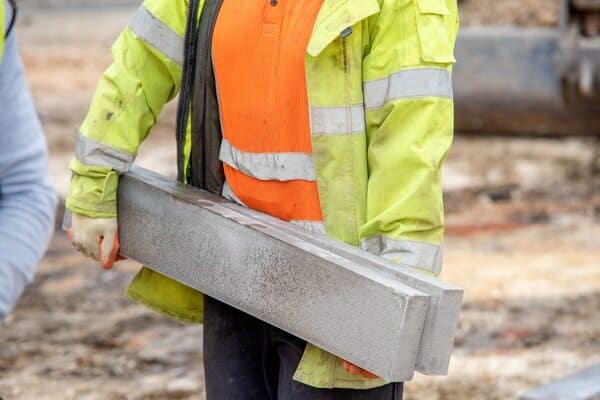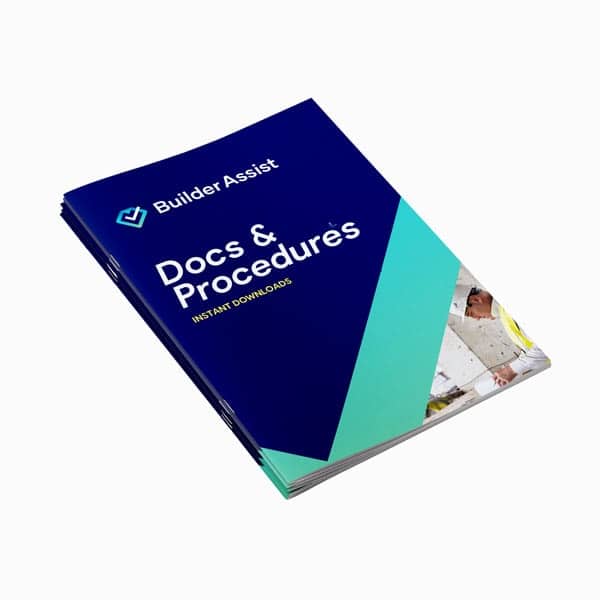
In the trades and construction industries, manual handling is an inherent reality.
It's the cornerstone of everyday operations, involving the physical manipulation of objects to achieve tasks. From lifting and carrying materials to positioning tools, manual handling is a practical skill.
While manual handling forms the backbone of productivity, its significance is not just in its routine nature, but in its potential to impact workplace safety and efficiency.

Manual handling is the backbone of trades and construction, but it's not without risks.
What is manual handling?
Simply put, it refers to any task that involves using physical effort to lift, lower, push, pull, or carry objects. From moving construction materials to adjusting tools and equipment, it is the foundation upon which trades and construction industries stand. However, this seemingly routine practice can quickly turn hazardous if not managed carefully.
Scope of activities
Manual handling tasks are as varied as the objects we interact with. They encompass:
- Lifting: The straightforward action of raising an object from a lower position to a higher one, often involving the use of the arms and back muscles.
- Lowering: The reverse of lifting, involving controlled lowering of objects.
- Carrying: Moving an object from one location to another while maintaining physical contact with it.
- Pushing: Applying force to move an object away from the body.
- Pulling: Applying force to bring an object closer to the body.
- Manoeuvring: Adjusting the position or orientation of an object, such as turning a valve or adjusting a lever.
Why it matters
While manual handling might appear routine, it comes with inherent risks that can lead to injuries if not managed properly. Incorrect lifting techniques, overexertion, and repetitive movements can strain muscles, ligaments, and joints, potentially leading to musculoskeletal disorders (MSDs). These injuries can range from minor discomfort to chronic pain, affecting both physical well-being and overall work performance.
Trades and construction
In trades and construction, manual handling isn't just a task; it's a way of life. Whether it's a plumber manoeuvring pipes or a carpenter hoisting timber, it is an inherent part of their craft. Construction sites are bustling hubs of activity, where equipment, materials, and tools are frequently relocated. This daily rhythm places tradespeople at the forefront of these types of challenges.
Workplace Injuries
Manual handling is a prime contributor to workplace injuries, particularly in the construction sector. The physical demands of lifting, carrying, and repetitive motions can lead to various injuries, including:
- Musculoskeletal Disorders (MSDs): These encompass a range of injuries affecting muscles, tendons, ligaments, and joints. Construction workers are at risk of MSDs due to lifting heavy loads, repetitive motions, and awkward postures. Common MSDs include back pain, strains, sprains, and tendonitis.
- Hernias: Lifting heavy loads without proper technique can lead to hernias, where organs or tissues push through weakened muscles or tissues.
- Fractures: Incorrect lifting or awkward movements can result in fractures, especially in high-risk areas like construction sites.
- Soft Tissue Injuries: The demanding nature of construction work can lead to soft tissue injuries, such as bruises, cuts, and abrasions from contact with tools or materials.
- Slips, Trips, and Falls: While not strictly manual handling, these accidents can result from improper handling of objects or cluttered workspaces, causing severe injuries.
Mitigating risks with safety measures
Understanding the risks is the first step toward a safer workplace. Implementing safety measures like these is paramount to prevent injuries:
- Training: Educate workers about proper lifting techniques, posture, and body mechanics. Regular training refreshers reinforce safe practices.
- Mechanical Aids: Use equipment like trolleys, hoists, and cranes to reduce physical strain.
- Teamwork: Encourage collaboration among workers for heavy lifting tasks, distributing the load and minimising individual strain.
- Ergonomic Design: Incorporate ergonomic principles into tools and equipment to reduce strain during use.
- Risk Assessment: Identify potential hazards before they become accidents. Analyse the task, the load, and the environment for risks.
- Correct Procedures: establish robust manual handling procedures and keep documents onsite as evidence of risk management being in place.
If you're a person conducting a business or undertaking (PCBU), you need to understand your obligations to keep workers safe.
Promoting a Safe Job Site
For trades and construction, prioritising safety means incorporating best practices into daily routines. Through proper training, awareness, and the implementation of safety measures, tradespeople and construction workers can continue to excel, while safeguarding their well-being.



